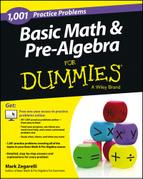The Princeton Review would like to thank John Fulmer and John Robertson for their hard work and expertise with revising the 3rd edition of this book.
Special thanks to Adam Robinson, who conceived of and perfected the Joe Bloggs approach to standardized tests, and many of the other successful techniques used by The Princeton Review.
Lastly, the editor of this edition would like to thank Sara Kuperstein, Deborah A. Silvestrini, Liz Rutzel, and Melissa Duclos-Yourdan for their work on this edition.
Register Your Book Online!
Go to PrincetonReview.com/cracking
Youll see a welcome page where you can register your book using the following ISBN: 9781524710590
After placing this free order, youll either be asked to log in or to answer a few simple questions in order to set up a new Princeton Review account.
Finally, click on the Student Tools tab located at the top of the screen. It may take an hour or two for your registration to go through, but after that, youre good to go.
If you have noticed potential content errors, please email with the full title of the book, its ISBN number (located above), and the page number of the error.
Experiencing technical issues? Please email
with the following information:
your full name
email address used to register the book
full book title and ISBN
your computer OS (Mac or PC) and Internet browser (Firefox, Safari, Chrome, etc.)
description of technical issue
Once youve registered, you can
Access additional chapter drills to challenge your knowledge of that particular math topic
Print the key terms lists found at the end of each chapter
Check to see if there have been any corrections or updates to this edition
Offline Resources
Math Workout for the SAT, 4th Edition
Math and Science Workout for the ACT, 3rd Edition
Math Workout for the GRE, 4th Edition
Math Workout for the GMAT, 5th Edition
Word Smart, 6th Edition
More Word Smart, 2nd Edition
Grammar Smart, 4th Edition
Introduction
When it comes to math, many people equate the ability to do arithmetic quickly with being math smart. But a calculator or an adding machine can perform mechanical functions quickly. Does this mean something with batteries is smart? Unlikely. Being math smart means understanding how math works. This book reviews some basic math functions; it will help you to do these functions and understand why they work. When youre finished with this book, you will have a better grasp of what math means and how to get through it. A lot of people reading this may be saying, But, the thing is, Im not really a math person. Little do you know, youre more of a math person than you think!
Youre faced with math every single day. Whether its counting your change after buying a sandwich from the store or estimating the new price of an item thats 25% off, youre constantly doing math to function in everyday life. People like to think of the world, and even their brains, as split into two partsthe math and science part, and the English and history part. It doesnt have to be that way. Being math smart doesnt have to do with some specific kind of brain. With practice and the help of this book, you can be math smart. Believe it or not, but your brain can handle a lot of different things at once, and just because you are comfortable with one thing doesnt mean you have to be uncomfortable with something else. Math is about patterns that exist in the world. When you see patterns in the world, you are understanding math.
You dont have to love math, but it is a sure thing that you can do math. So sit down, grab some paper, and relax. If you get to something in this book that confuses you, simply back up and reread the information that comes before it. This book is intended to help you, not test you; you can always go back as many times as needed.
How to Use This Book
This book covers the basic underpinnings of math. It covers all the basic math found on the standardized tests you may face trying to go to college (SAT and ACT), graduate school (GRE), or business school (GMAT). There are drills throughout, with complete answers and explanations included at the end of each chapter. If there is a chapter that covers something you already feel comfortable with, feel free to only do the drill questions to make sure, and then go on to the next chapter. The first seven chapters also contain Approximate This quizzes for you to test your math guessing skills, as well as a list of key terms covered in the chapter. The last chapter of the book will show you how to apply your newly learned math smart skills to the math found on the standardize tests listed above. Its great to be math smart, but its even better to be test smart.
Why The Princeton Review?
We are one of the worlds leaders in test prep and believe in improving students grades to ultimately get higher scores on their tests. This book aims to do just that; relate everyday math to help you raise your grades and ultimately prepare for your test day. Each year we help millions of students score higher through our rigorous classroom and online courses, private tutoring, and best-selling books. Our philosophy is simple: Teach students exactly what they need to know while providing them with an experience that is truly unique and








![Debra Anne Ross [Debra Anne Ross] - Master Math: Basic Math and Pre-Algebra](/uploads/posts/book/119083/thumbs/debra-anne-ross-debra-anne-ross-master-math.jpg)



